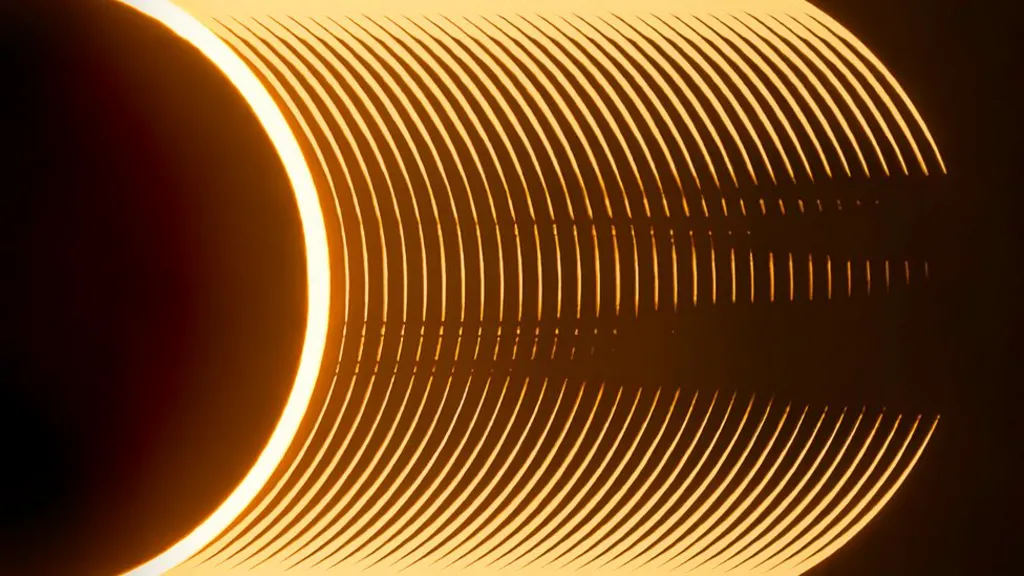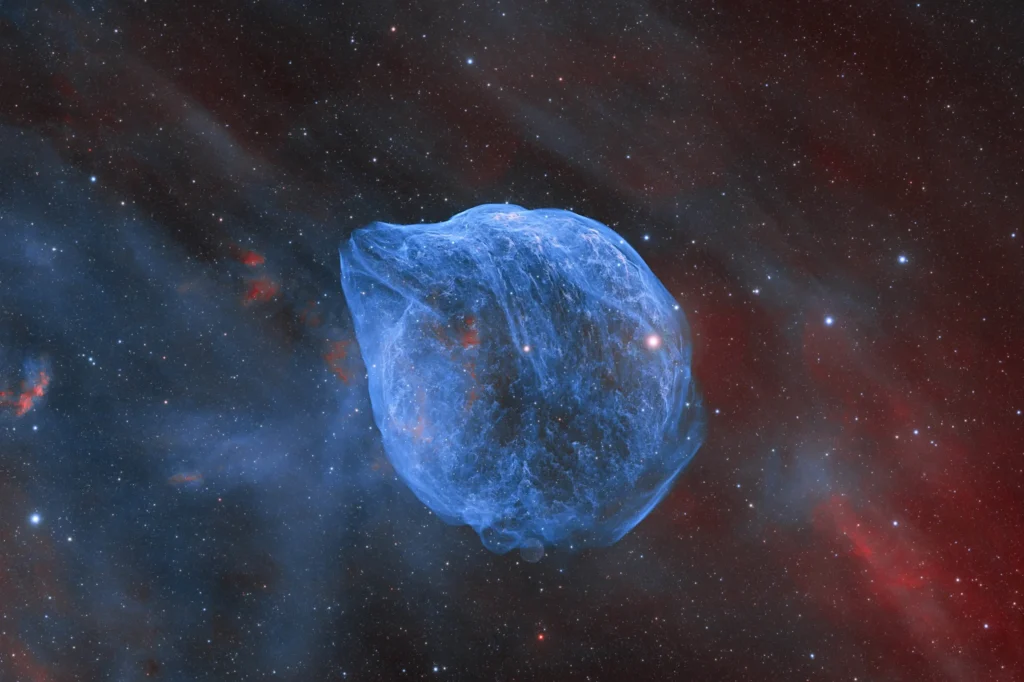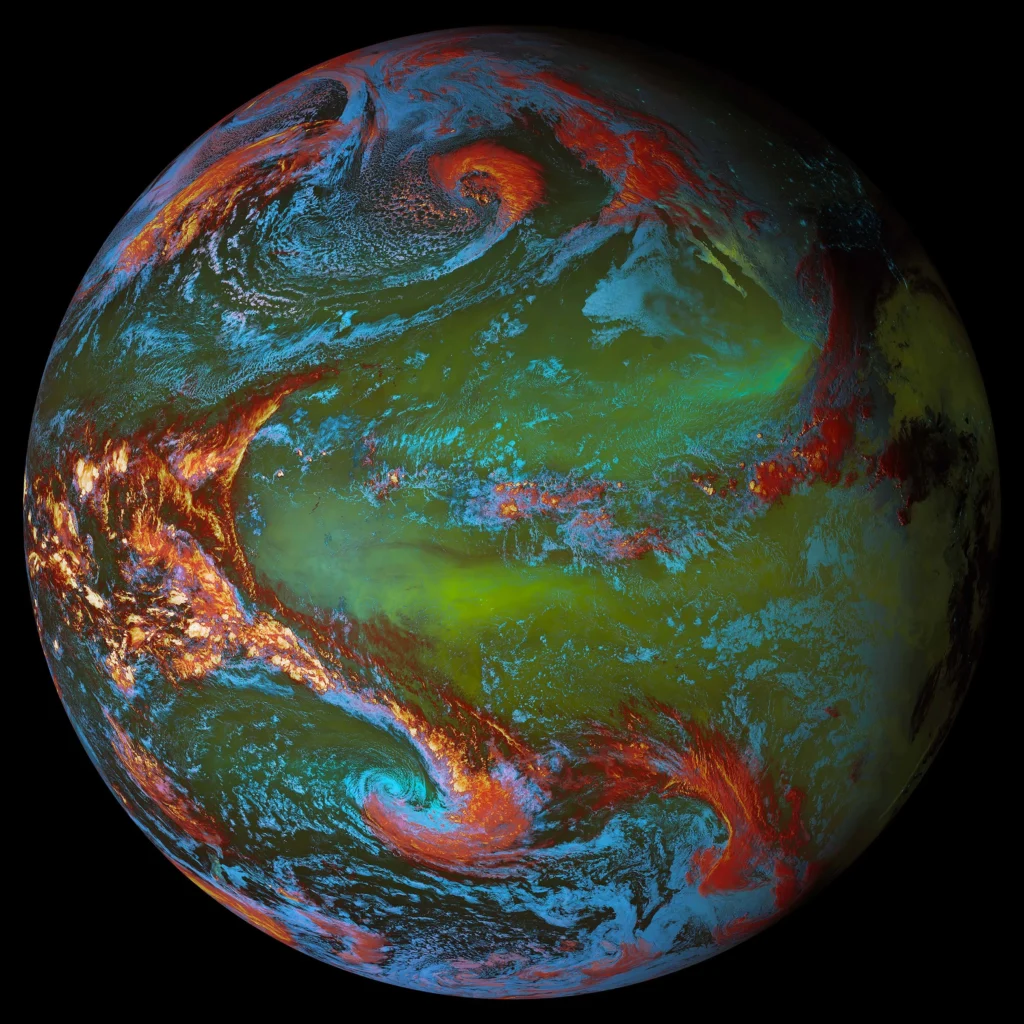The cosmos has always fascinated humanity, serving as both a scientific frontier and an artistic muse. These images provide not just stunning visuals but also offer a window into the cosmic events that shape our universe, engaging the public and inspiring further exploration. Let’s explore the details, the science behind these images, and what they teach us about the cosmos.
The Grand Prize Winner: Capturing the Fleeting Moments of an Annular Eclipse
The grand prize of the 2024 Astronomy Photographer of the Year was awarded to Ryan Imperio for his breathtaking image titled “Distorted Shadows of the Moon’s Surface Created by an Annular Eclipse.” This photograph, taken in Odessa, Texas, on October 14, 2023, captures the phenomenon known as “Baily’s beads,” where sunlight streams through the valleys and craters on the moon’s surface during an eclipse. This image not only captures a rare celestial event but also demonstrates the precision and artistry of astrophotography.

The photograph captures a rare celestial event, showcasing the beauty and precision of astrophotography. During an annular eclipse, the moon covers the sun’s center, leaving a “ring of fire” effect. However, just before and after this phase, Baily’s beads appear, created by sunlight filtering through the rugged lunar terrain. Capturing these fleeting moments requires impeccable timing and technical skill. According to the competition judge Kerry-Ann Lecky Hepburn, “This is an impressive dissection of the fleeting few seconds during the visibility of the Baily’s beads. It’s exceptional work deserving of high recognition.”
The significance of this image goes beyond its aesthetic appeal. It highlights the complex interplay between light and celestial bodies, offering a rare glimpse into the dynamic nature of our solar system. By documenting these moments, photographers like Ryan Imperio help bridge the gap between professional astronomers and the general public, making complex astronomical phenomena accessible and inspiring. Such photographs can also serve as valuable educational tools, providing visual examples to help explain celestial mechanics and the intricacies of our universe. For educators, this image can be a practical example to illustrate concepts related to the moon’s topography, light behavior, and orbital mechanics, offering students a real-world application of theoretical knowledge.
The Dolphin Head Nebula: A Deep Dive into Cosmic Beauty
Another standout in the 2024 competition is the image of the Dolphin Head Nebula (SH2-308), captured by Xin Feng and Miao Gong, which won the Sir Patrick Moore Prize for Best Newcomer. This nebula, located in the constellation Canis Major, appears to be blowing bubbles in the cosmic sea, earning its whimsical nickname. The photograph beautifully captures the vibrant colors and delicate structures of the nebula, a sight that is both mesmerizing and scientifically significant.

The Dolphin Head Nebula photograph reveals the captivating and often playful appearance of nebulae in deep space. Nebulae like SH2-308 are massive clouds of gas and dust that serve as the birthplaces for stars. The Dolphin Head Nebula, specifically, is shaped by a powerful stellar wind emanating from a massive Wolf-Rayet star at its center. Over time, this wind pushes surrounding gas into a bubble-like structure, creating a stunning visual display. The photographers spent 10 nights in China’s Sichuan province in January to capture this intricate image.
Wolf-Rayet stars are among the hottest and most massive stars known, often acting as cosmic engines driving the evolution of the galaxies around them. Observing their interactions with surrounding gas and dust provides insights into the life cycles of stars and the complex processes that govern star formation. By studying nebulae and their associated stars, astronomers gain a deeper understanding of the fundamental forces shaping galaxies, offering clues about our own solar system’s past and future. The Dolphin Head Nebula serves as a reminder of the continuous birth, death, and rebirth occurring in the cosmos—a cycle that underpins much of what we know about astrophysics and cosmology.
Innovation in Astrophotography: Newcomers and Unique Perspectives
The 2024 competition also celebrated the creativity and innovation of astrophotographers. The Annie Maunder Prize for Image Innovation was awarded to Sergio Díaz Ruiz from Spain for his multicolored image of Earth. This innovative photograph, created using satellite data, showcases the land masses, oceans, and atmospheric features in vivid colors, providing a fresh perspective on our home planet. The combination of art and data science results in a work that is as informative as it is beautiful.

Newcomers to the field of astrophotography are bringing fresh perspectives and techniques that push the boundaries of both art and science. For instance, Sergio Díaz Ruiz’s innovative approach combined various datasets to create a visually striking image that highlights the complexity and beauty of Earth’s ecosystems. By blending satellite data with creative artistry, he demonstrated how technology and imagination can come together to offer new ways of seeing our world. His image provides an opportunity to view our planet not just as a home but as a living, breathing entity, filled with dynamic processes that are visually stunning and scientifically significant.
This kind of innovation is vital for the future of astrophotography and science communication. When complex data is presented in engaging and accessible ways, it allows a broader audience to appreciate and understand the scientific principles behind these stunning images. As such, competitions like these play a crucial role in inspiring the next generation of scientists and artists. Encouraging innovation in astrophotography not only enriches the field but also supports scientific literacy by making space science more accessible to the general public. Moreover, creative approaches like these can lead to unexpected discoveries and insights, further pushing the boundaries of what is possible in the study of our universe.
The Broader Impact of Astrophotography Competitions
Astrophotography competitions like the Astronomy Photographer of the Year play a significant role in science communication and public engagement. By combining scientific accuracy with artistic expression, these competitions make complex concepts more accessible and engaging to a broader audience.
Astrophotography serves as a bridge between science and the general public, fostering a deeper understanding and appreciation of the cosmos. The winning images from this year’s competition not only showcase the beauty of the universe but also tell stories about the complex processes that govern celestial bodies. From the intricate details of an annular eclipse to the colorful expanse of a nebula, these images provide a visual narrative that can captivate and educate simultaneously.
The ability of astrophotography to convey both beauty and information makes it an invaluable tool for science communication. By turning abstract scientific concepts into tangible, awe-inspiring images, it helps to demystify the universe and encourage curiosity and exploration. The impact of these competitions extends beyond the scientific community, reaching classrooms, museums, and living rooms worldwide, where they spark conversations about our place in the cosmos. Such events often lead to a ripple effect—encouraging more people to look up, consider the stars, and ponder the mysteries of the universe.



















